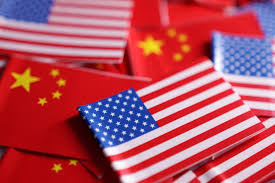
In Kuala Lumpur, top economic officials from the United States and China embarked on high-stakes negotiations as both powers seek to avert an all-out trade war and steer the upcoming meeting between U.S. President Donald Trump and Chinese President Xi Jinping toward a constructive outcome. Their discussions mark a critical effort to recalibrate a fraught bilateral economic relationship by addressing underlying structural frictions—rather than simply managing tariff skirmishes.
Addressing the Escalation Risk
The immediate impetus for the talks is the threat of fresh U.S. tariffs, with Washington having threatened to impose 100 per cent duties on Chinese goods starting November 1 in response to Beijing’s newly expanded export controls on rare-earth magnets and minerals. China’s retaliatory step of placing export licences on products that use rare-earth materials has aggravated the standoff and shattered a delicate truce negotiated earlier this year. In effect, both sides face the risk of a trading-relationship spiral: increased U.S. export blacklists and Chinese curbs could push tariffs from tens of per cent into triple-digits, with dire economic consequences for supply chains globally.
Analysts warn that such escalation would not only deepen the bilateral rupture, but also destabilise global trade flows, investment decisions and corporate planning. Faced with those stakes, the Kuala Lumpur talks are explicitly oriented toward risk-mitigation: how to halt the escalation, rebuild trust and create a pathway toward the Trump–Xi summit at the upcoming Asia-Pacific Economic Cooperation forum in South Korea.
For the U.S., the need to avoid further escalation is driven by political and economic factors. U.S. farmers and manufacturers have already been hurt by Chinese retaliatory measures and by supply-chain disruptions triggered by earlier rounds of tariffs. A full new round of duties would worsen inflation, raise costs for U.S. import-dependent firms and deepen uncertainty for investors. Washington also recognises that the credibility of its trade-coercion strategy may be eroding: periodic escalations without sustainable exit paths weaken its negotiating position and global leadership status.
Meanwhile, China has strong incentives to avoid a protracted confrontation that could destabilise its export-oriented growth, while also eroding its strategic advantage in critical sectors such as rare-earth processing and high-tech supply chains. Its newly imposed export controls were clearly designed as leverage, yet Beijing understands that triggering a full-scale U.S. tariff backlash would damage China’s access to advanced inputs and risk accelerating the “decoupling” trend that many analysts say is underway. Thus, both capitals share a converging interest—however uneasy—in managing the conflict rather than amplifying it.
Salvaging the Trump–Xi Meeting
One of the primary goals of the Kuala Lumpur negotiating track is to pave the way for the forthcoming summit between Trump and Xi. That meeting is expected to serve as both a symbolic reset and as a forum for concrete interim measures. Key items on the agenda include possible tariff relief, easing of export-control burdens (especially on technology and rare-earth flows), and Chinese commitments to resume substantial purchases of U.S. agricultural goods such as soybeans. For Trump, addressing farm-state distress is politically salient; for Xi, securing a high-profile face-to-face with America’s leader helps signal a degree of cooperation despite underlying competition. But making the summit meaningful depends on outcomes from these preparatory talks: negotiators must translate strategic dialogue into actionable steps. If they fail, the Trump–Xi encounter risks becoming an empty photo-op, and the trade war could resume from a worse starting point.
While these talks centre on tactical measures, the heart of the matter lies in long-term structural issues that overshadow headline tariff rates. Washington is increasingly fixated on Chinese dominance in rare-earth minerals and processing, cryptocurrencies and digital networks, advanced semiconductors, and the dual-use nature of many exports. China’s leverage in rare-earths is not only a trade issue but also a strategic input into defence and high-tech sectors, making it sensitive to U.S. national-security concerns.
At the same time, the U.S. export-control apparatus has expanded sharply—automatically blacklisting firms more than 50 per cent owned by Chinese entities, and exploring curbs on a wide array of software-enabled exports. These moves signal that the U.S. trade agenda is morphing into an industrial-security agenda. For China, conceding on these fronts would relinquish critical sources of strategic leverage—yet resisting too hard invites deeper U.S. retaliation and accelerated decoupling of supply chains. Hence, even as both sides seek to avoid immediate escalation, they remain cautious: a lasting resolution must address these deeper fault-lines rather than simply freeze tariffs temporarily.
Why the Stakes Are Too High to Ignore
Failure to de-escalate would yield significant costs. Research shows that elevated trade policy uncertainty acts as a tax on business investment, especially in sectors like autos, semiconductors and advanced manufacturing. Past U.S.–China tariff spats prompted rerouting of supplies via third countries, increased costs for firms and slower global value-chain adjustments. These dynamics mean that a return to a major trade war would ripple far beyond bilateral trade flows—harming corporate planning, inflation, and growth prospects in both economies and among third-party nations.
For China, prolonged confrontation could threaten its export-driven growth model and force faster realignment of global supply chains away from Chinese sourcing. For the U.S., aggressive tariffs without a credible resolution risk undermining alliances and pushing partners to hedge toward China+ 1 strategies, reducing U.S. leverage. The upcoming talks thus represent a rare window for both powers to stabilise the relationship before it spins further out of control.
Looking ahead, key indicators will provide signals on whether the reset is taking hold. First, any announcements of interim tariff roll-backs, or postponements of scheduled escalation (for example new duties due on November 1) will indicate progress. Second, language on export-control dialogue or limited easing in rare-earth licensing will show whether structural issues are being factored in. Third, Chinese public commitment to boosting U.S. agricultural purchases would signal willingness to reciprocate.
Finally, investor and corporate behaviour will matter: if firms report clearer signposts and reduce contingency restructuring, the negotiations may be bearing fruit. But if uncertainty remains high, and threat-rhetoric persists, the risk of drift back into escalation increases. The Kuala Lumpur talks may not resolve all problems, but they could determine whether the upcoming meeting between Trump and Xi becomes a stepping stone toward stability—or a pause before the next phase of confrontation.
(Source:www.reuters.com)
Addressing the Escalation Risk
The immediate impetus for the talks is the threat of fresh U.S. tariffs, with Washington having threatened to impose 100 per cent duties on Chinese goods starting November 1 in response to Beijing’s newly expanded export controls on rare-earth magnets and minerals. China’s retaliatory step of placing export licences on products that use rare-earth materials has aggravated the standoff and shattered a delicate truce negotiated earlier this year. In effect, both sides face the risk of a trading-relationship spiral: increased U.S. export blacklists and Chinese curbs could push tariffs from tens of per cent into triple-digits, with dire economic consequences for supply chains globally.
Analysts warn that such escalation would not only deepen the bilateral rupture, but also destabilise global trade flows, investment decisions and corporate planning. Faced with those stakes, the Kuala Lumpur talks are explicitly oriented toward risk-mitigation: how to halt the escalation, rebuild trust and create a pathway toward the Trump–Xi summit at the upcoming Asia-Pacific Economic Cooperation forum in South Korea.
For the U.S., the need to avoid further escalation is driven by political and economic factors. U.S. farmers and manufacturers have already been hurt by Chinese retaliatory measures and by supply-chain disruptions triggered by earlier rounds of tariffs. A full new round of duties would worsen inflation, raise costs for U.S. import-dependent firms and deepen uncertainty for investors. Washington also recognises that the credibility of its trade-coercion strategy may be eroding: periodic escalations without sustainable exit paths weaken its negotiating position and global leadership status.
Meanwhile, China has strong incentives to avoid a protracted confrontation that could destabilise its export-oriented growth, while also eroding its strategic advantage in critical sectors such as rare-earth processing and high-tech supply chains. Its newly imposed export controls were clearly designed as leverage, yet Beijing understands that triggering a full-scale U.S. tariff backlash would damage China’s access to advanced inputs and risk accelerating the “decoupling” trend that many analysts say is underway. Thus, both capitals share a converging interest—however uneasy—in managing the conflict rather than amplifying it.
Salvaging the Trump–Xi Meeting
One of the primary goals of the Kuala Lumpur negotiating track is to pave the way for the forthcoming summit between Trump and Xi. That meeting is expected to serve as both a symbolic reset and as a forum for concrete interim measures. Key items on the agenda include possible tariff relief, easing of export-control burdens (especially on technology and rare-earth flows), and Chinese commitments to resume substantial purchases of U.S. agricultural goods such as soybeans. For Trump, addressing farm-state distress is politically salient; for Xi, securing a high-profile face-to-face with America’s leader helps signal a degree of cooperation despite underlying competition. But making the summit meaningful depends on outcomes from these preparatory talks: negotiators must translate strategic dialogue into actionable steps. If they fail, the Trump–Xi encounter risks becoming an empty photo-op, and the trade war could resume from a worse starting point.
While these talks centre on tactical measures, the heart of the matter lies in long-term structural issues that overshadow headline tariff rates. Washington is increasingly fixated on Chinese dominance in rare-earth minerals and processing, cryptocurrencies and digital networks, advanced semiconductors, and the dual-use nature of many exports. China’s leverage in rare-earths is not only a trade issue but also a strategic input into defence and high-tech sectors, making it sensitive to U.S. national-security concerns.
At the same time, the U.S. export-control apparatus has expanded sharply—automatically blacklisting firms more than 50 per cent owned by Chinese entities, and exploring curbs on a wide array of software-enabled exports. These moves signal that the U.S. trade agenda is morphing into an industrial-security agenda. For China, conceding on these fronts would relinquish critical sources of strategic leverage—yet resisting too hard invites deeper U.S. retaliation and accelerated decoupling of supply chains. Hence, even as both sides seek to avoid immediate escalation, they remain cautious: a lasting resolution must address these deeper fault-lines rather than simply freeze tariffs temporarily.
Why the Stakes Are Too High to Ignore
Failure to de-escalate would yield significant costs. Research shows that elevated trade policy uncertainty acts as a tax on business investment, especially in sectors like autos, semiconductors and advanced manufacturing. Past U.S.–China tariff spats prompted rerouting of supplies via third countries, increased costs for firms and slower global value-chain adjustments. These dynamics mean that a return to a major trade war would ripple far beyond bilateral trade flows—harming corporate planning, inflation, and growth prospects in both economies and among third-party nations.
For China, prolonged confrontation could threaten its export-driven growth model and force faster realignment of global supply chains away from Chinese sourcing. For the U.S., aggressive tariffs without a credible resolution risk undermining alliances and pushing partners to hedge toward China+ 1 strategies, reducing U.S. leverage. The upcoming talks thus represent a rare window for both powers to stabilise the relationship before it spins further out of control.
Looking ahead, key indicators will provide signals on whether the reset is taking hold. First, any announcements of interim tariff roll-backs, or postponements of scheduled escalation (for example new duties due on November 1) will indicate progress. Second, language on export-control dialogue or limited easing in rare-earth licensing will show whether structural issues are being factored in. Third, Chinese public commitment to boosting U.S. agricultural purchases would signal willingness to reciprocate.
Finally, investor and corporate behaviour will matter: if firms report clearer signposts and reduce contingency restructuring, the negotiations may be bearing fruit. But if uncertainty remains high, and threat-rhetoric persists, the risk of drift back into escalation increases. The Kuala Lumpur talks may not resolve all problems, but they could determine whether the upcoming meeting between Trump and Xi becomes a stepping stone toward stability—or a pause before the next phase of confrontation.
(Source:www.reuters.com)





